Samsung Galaxy S 6 and S 6 Edge: Preview
by Joshua Ho on March 26, 2015 9:00 AM EST- Posted in
- Smartphones
- Samsung
- Mobile
- Galaxy S6
- Galaxy S6 Edge
GPU Performance
As previously discussed, on the GPU Samsung has added two additional shader cores to the Mali T760 for additional performance in addition to a clock speed bump from 700 to 772 MHz maximum. To evaluate the effects of this we look at GFXBench which is generally accepted as a pure GPU benchmark.

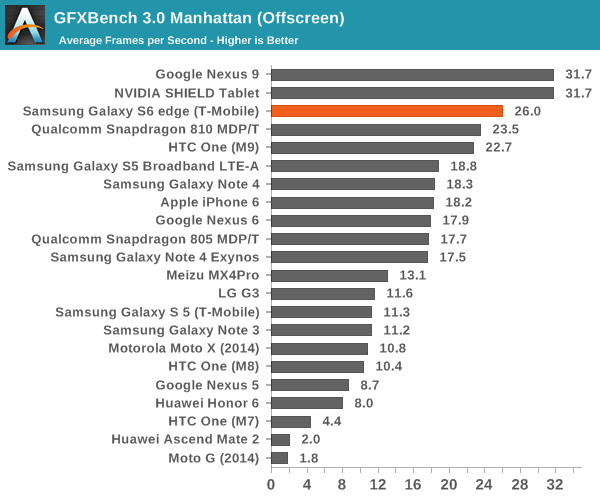
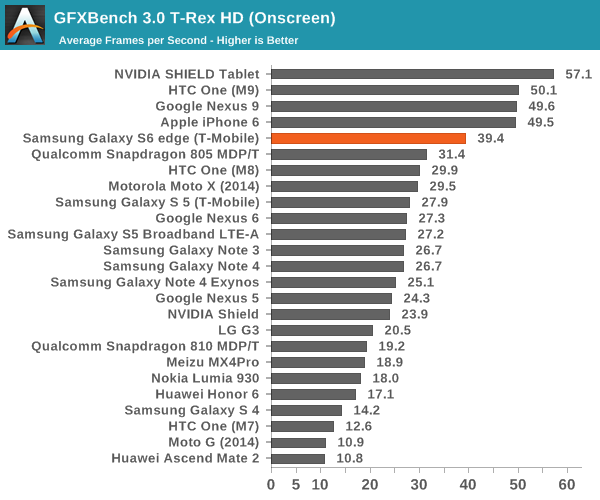
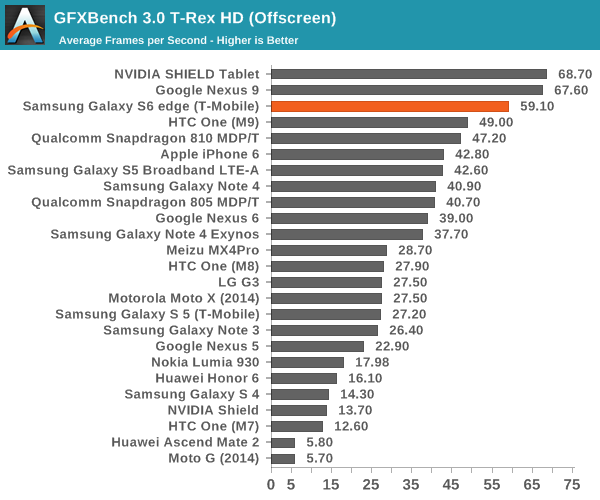
From the results the Mali T760MP8 GPU of the Exynos 7420 performs admirably in comparison to the Adreno 430 of the Snapdragon 810. We see a 10% lead over the Adreno 430 in Manhattan, growing to 20% in T-Rex. Qualcomm hinted that the Adreno 430 is more strongly improved in ALU performance over the Adreno 420, which would explain why the gap isn't as significant this generation. A 700 MHz clock on the Adreno 430 would likely equal to T760 in this case, but I suspect the power consumption of such a clock would be untenable. The Galaxy S6 does fall behind on the on-screen benchmarks due to the 1440p display compared to the 1080p display of the One M9, but rendering at a lower resolution would avoid most of these problems in real games.
Display
As previously discussed, the Galaxy S6 line introduces a newer generation of AMOLED displays, which is said to increase maximum luminance to 600 nits. Samsung claims that this was achieved with the use of new materials, which is likely necessary in order to sustain power efficiency improvements. It doesn't seem that AMOLED is uniquely suited to high resolution, but rather that Samsung Display Corp. is managing to dramatically improve how they make AMOLED displays with every year that offset power consumption increases from higher resolution displays. To find out how Samsung did, we use SpectraCal's CalMAN 5 Ultimate, in addition to X-Rite's i1Pro2 Basic to characterize displays as accurately as possible.
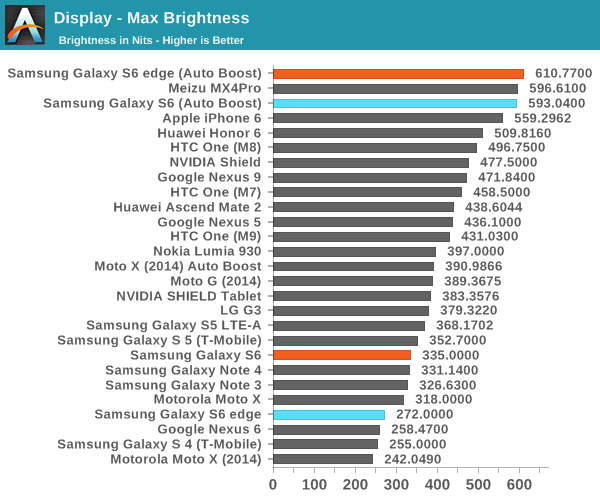
From the results Samsung's claims of a 600 nit display are valid in this case, which is a 100% APL white display. It's important to note that achieving this requires the use of auto-brightness, and that manual brightness is limited to a much lower brightness to reduce power usage, here the S6 sees similar maximum brightness as the S5. The S6 edge disappointingly only achieves 272 nits in this mode, a rather low value. I saw color balance shift dramatically in auto-boost mode, which suggests that this operating mode is likely less efficient than manual brightness. As an explanation, we've seen that colors are controlled in AMOLED by voltage while brightness is controlled by PWM (pulse width modulation). As with most recent AMOLED displays, there's no DC bias to the pixels so the contrast really is infinite instead of just a very large number when displaying black.
Galaxy S6
Galaxy S6 edge
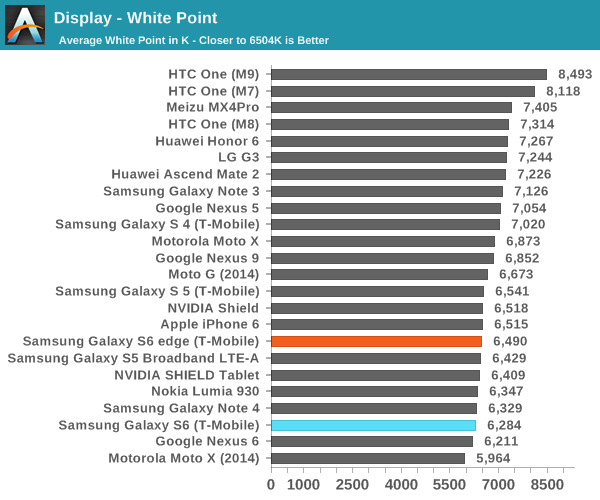
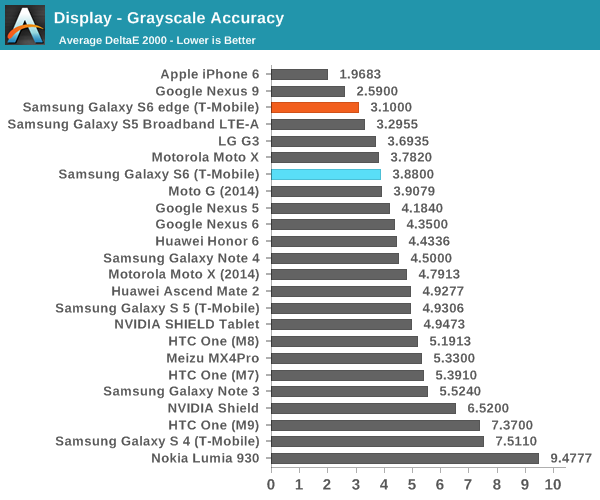
Moving on to grayscale, we can see that Samsung has done a pretty good job of controlling the white point and gamma across the saturation sweep, even if green is slightly dominant in both displays. We can also see that there is variation across displays as the S6 edge is closer to neutral while the S6 sample tends a bit warmer.
Galaxy S6
Galaxy S6 Edge
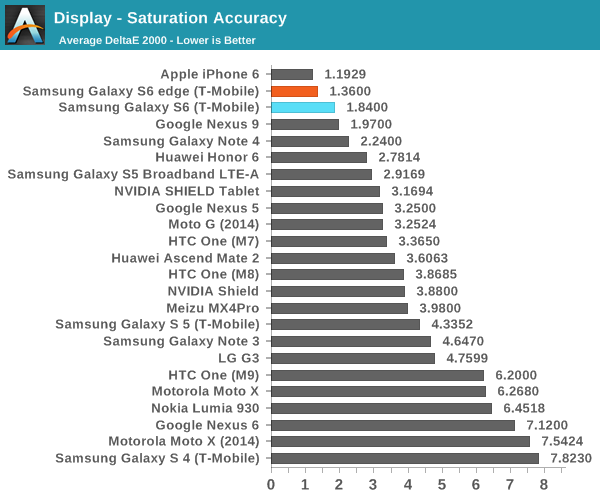
In the saturation sweep, both displays do an incredible job. I really don't have anything else to say here, because there's really no way to improve on the level of calibration Samsung has done on this display. Unless Samsung calibrates every single display in production, which is wildly impractical and effectively impossible to do, this is as good as it gets for a mass-produced device. Improving past this point will also be incredibly difficult to perceive, which means there's no real reason to go any further.
Galaxy S6
Galaxy S6 edge
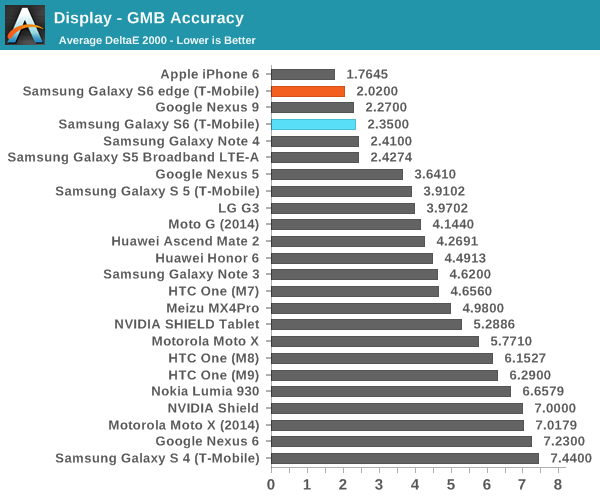
In the Gretag MacBeth ColorChecker, we can get an idea for overall color accuracy, which paints a picture similar to the saturation test. The only real problem I've noticed with these displays are the viewing angles, which can produce color shifting when the display is tilted. This is a bit of an issue on the edge variant as I can see that the edges of the display appear somewhat green when viewed head on, but otherwise there are no real issues to be seen here. Overall, this is probably the best display anyone will be able to get in a smartphone right now. This level of progress is amazing from Samsung, given just how bad things were with the Galaxy S' AMOLED display, even as recent as the display of the Galaxy S4. With the Galaxy S5 review, I said that I wouldn't be surprised to see AMOLED equal, if not exceed LCD within a year or two, and Samsung has managed to finally hit that mark.



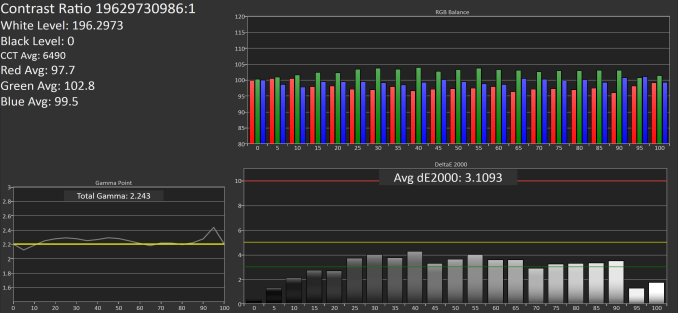
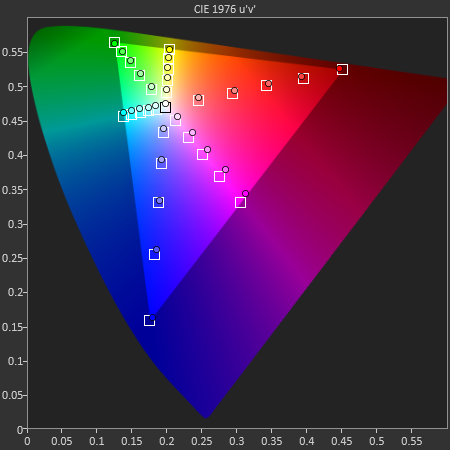
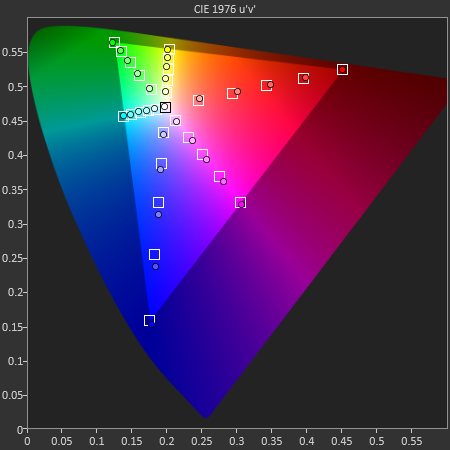
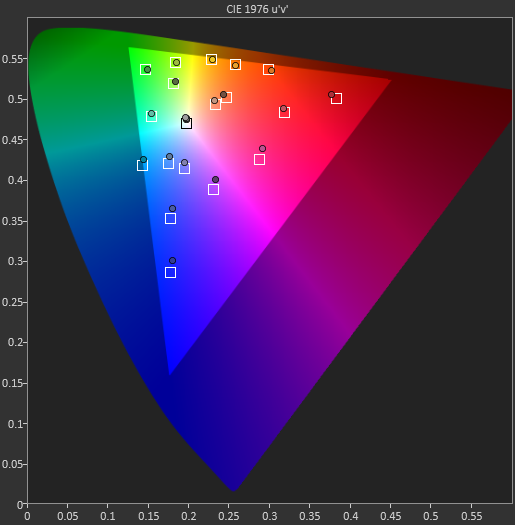









200 Comments
View All Comments
cknobman - Thursday, March 26, 2015 - link
Higher resolution screen.More RAM
Smaller non removable battery
I'm scared to see the battery life benchmarks.
For me the performance does not seem that great. Its OK but not class leading necessarily.
Battery degradation is my main concern. My wifes S5 battery was so bad after 1.5 years it would not last 3 hours. At least with the S5 we could easily buy a replacement and get her phone back to lasting a day without a charge.
This new S6 means users will be screwed when the battery goes bad.
cknobman - Thursday, March 26, 2015 - link
I meantt S4 for my wifes phone, sorry typo.blanarahul - Thursday, March 26, 2015 - link
Impressed so far. But like you said I am worried about battery life. Samsung has usually done well in this regard but I am still quite skeptical. After all, the best SoC and display are useless if the phone doesn't last even 1 day of moderate use 1 year down the line. We really need more companies to follow THL, Motorola's lead and put very large batteries in phones.lilmoe - Thursday, March 26, 2015 - link
People need to put into account that Android 5.0.x is significantly worst in battery life than 4.4.x. It's only being fixed in 5.1.They'll have to do another battery test for the GS5 with the Lollipop update then compare it to the GS6.
That said, I'm hearing that Nexus devices are getting anywhere between 20-50% more battery life with 5.1 with different use cases. So I believe it's save to assume that the GS6 will get better in a couple of months when it gets the update.
robertkoa - Thursday, March 26, 2015 - link
Honestly I doubt if the Physics and heat created ( wasted energy) by all the Pixels will be overcome by Software.And we haven't seen the real world on a Network usage reports from users yet which are always lower SOTs than web scripts and Tests.
It's thin and beautiful and a little underpowered like Alpha was...
Some of us need thicker Note-like 8mm thick devices but in various screen sizes like Note 5 and Note 5 Compact.
To me 8mm can still be beautiful especially with a 4.7" screen and 3000 Mah Battery.
No miracles at 6.7mm or 6.8mm thin AND the Camera is protruding too far IMO ...fragile.
Still Samsung did extremely well on these and will sell huge and if the Camera is great I may even get one lol.
lilmoe - Friday, March 27, 2015 - link
I'm not one of the supporters of unnecessarily huge resolutions on screens that small. The GS6's hardware as a whole is faster and more power efficient than the GS5, but yes, i believe it would have been even faster, more fluid and more power efficient if they stuck with 1080p on that higher quality, more power efficient panel.That said, it's undeniable that software plays a huge role in battery life. That's a fact. So, i believe we need to be fair in our comparisons.
blue_urban_sky - Friday, March 27, 2015 - link
It just struck me and I'm probably wrong but if you have a brightness level / area then the power requirement is separate to the number of pixels you have. The difference then would be the power to drive the computing needed put things on the display and that would be effected by software.gyrocoptic - Friday, March 27, 2015 - link
You are not wrong. For some reason people seem to believe that 100 x 10W light bulbs use more power than 10 x 100W light bulbs. The S6 display is actually more energy efficient than the S5 display at the same brightness. The only battery concern would be that the GPU has to render a higher resolution image if, and only if, a game supports 2k resolution AND at the same frame rate. This is a highly unlikely scenario. In normal use the S6 will provide the best display ever seen on a smartphone at a power consumption equal to or less than that of the S5.lilmoe - Friday, March 27, 2015 - link
This perception that only games rendered at 1440p affect performance and battery life is very far from the truth. Even the simplest things as text and UI rendering at unnecessarily high resolutions have a dramatic effect, not to mention Web browsing.To make it short, take a look at the Dell XPS 13 review and look at the dramatic difference in battery life between both SKUs. Smartphones are basically computers with GSM modems. I don't see how the same won't apply.
The GPU is NOT the only part doing extra work, the platform as a whole takes quite a significant hit.
jospoortvliet - Sunday, March 29, 2015 - link
With LCD higher resolutions make it harder to reach the same brightness due to more circuitry blocking light. This harms the DELL XPS 13. I am not sure if this is the case with amoled - it has no backlight but pixels give light by themselves. It might very well not Make a difference so the battery impact will be far less than on LCD.